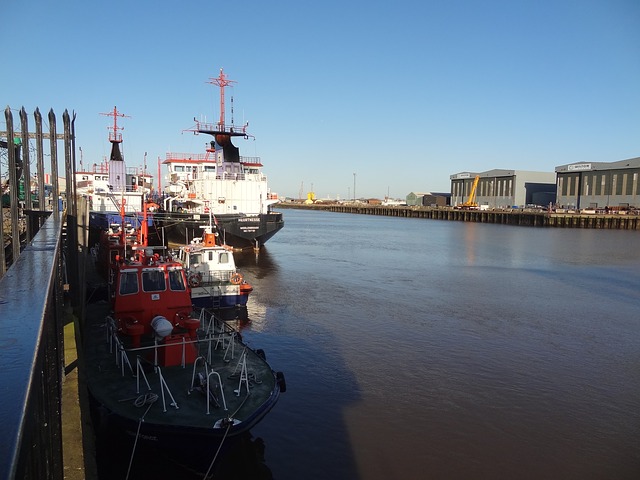By Tim Lambert
Early Middlesbrough
Until the 19th century, Middlesbrough was a hamlet. In 1829 it had only 40 inhabitants but things were about to change dramatically. From 1825 coal from the South Durham coalfield was taken by train from Darlington to Stockton on Tees. From there it was taken by train to other parts of the country. However, some businessmen led by Joseph Pease decided to build a port at Middlesbrough and they purchased the estate. On 27 December 1830, an extension of the Stockton and Darlington Railway opened to Middlesbrough.
The first coal was exported from the new port in January 1831. As soon as the port was up and running people went to live there. The company sold plots of land for building and by 1841 the population of Middlesbrough was over 5,400. In 1841 an Act of Parliament formed a body of men with powers to pave, drain and light the streets of Middlesbrough (with gas). In 1846 a Town Hall was built.
At first, Middlesbrough was a coal port. However, in 1851 the first blast furnace opened in Middlesbrough. Soon the iron industry was booming. Large numbers of men flocked to work in the iron industry and as a result, the population of Middlesbrough boomed. By 1861 the population had reached nearly 20,000. Meanwhile, in 1853 Middlesbrough was incorporated (given a corporation and mayor).
Amenities in Middlesbrough improved in the late 19th century. Albert Park opened in 1868. North Riding Infirmary opened in 1864. A free library opened in 1871. Middlesbrough Town Hall was designed by the architect George Gordon Hoskins (1837-1911). The foundation stone of the Town Hall was laid in 1883. It was opened by the Prince and Princess of Wales in 1889.
From 1898 electric trams ran through the streets of Middlesbrough. However, the trams were replaced by buses and they stopped running in the early 1930s. Meanwhile, the Grand Opera House opened in 1903. A Transporter Bridge opened over the River Tees in 1911.
Modern Middlesbrough
During the First World War, the iron and steel industry in Middlesbrough worked to full capacity. However many men from the town lost their lives in the war. Afterwards, there was very high unemployment. However, between the wars, the first council houses were built in Middlesbrough. The Second World War brought full employment as industries in the city boomed.
Following the Second World War, Middlesbrough continued to grow and many more council houses were built as well as private ones. Meanwhile, the singer Chris Rea was born in Middlesbrough in 1951.
Today Middlesbrough is also a busy shopping centre. The Cleveland Centre opened in 1971. Hillstreet Shopping Centre opened in 1982. Teesside Polytechnic became Teesside University in 1992. Middlesbrough Institute of Modern Art opened in 2007. In 2025 the population of Middlesbrough was 148,000.
